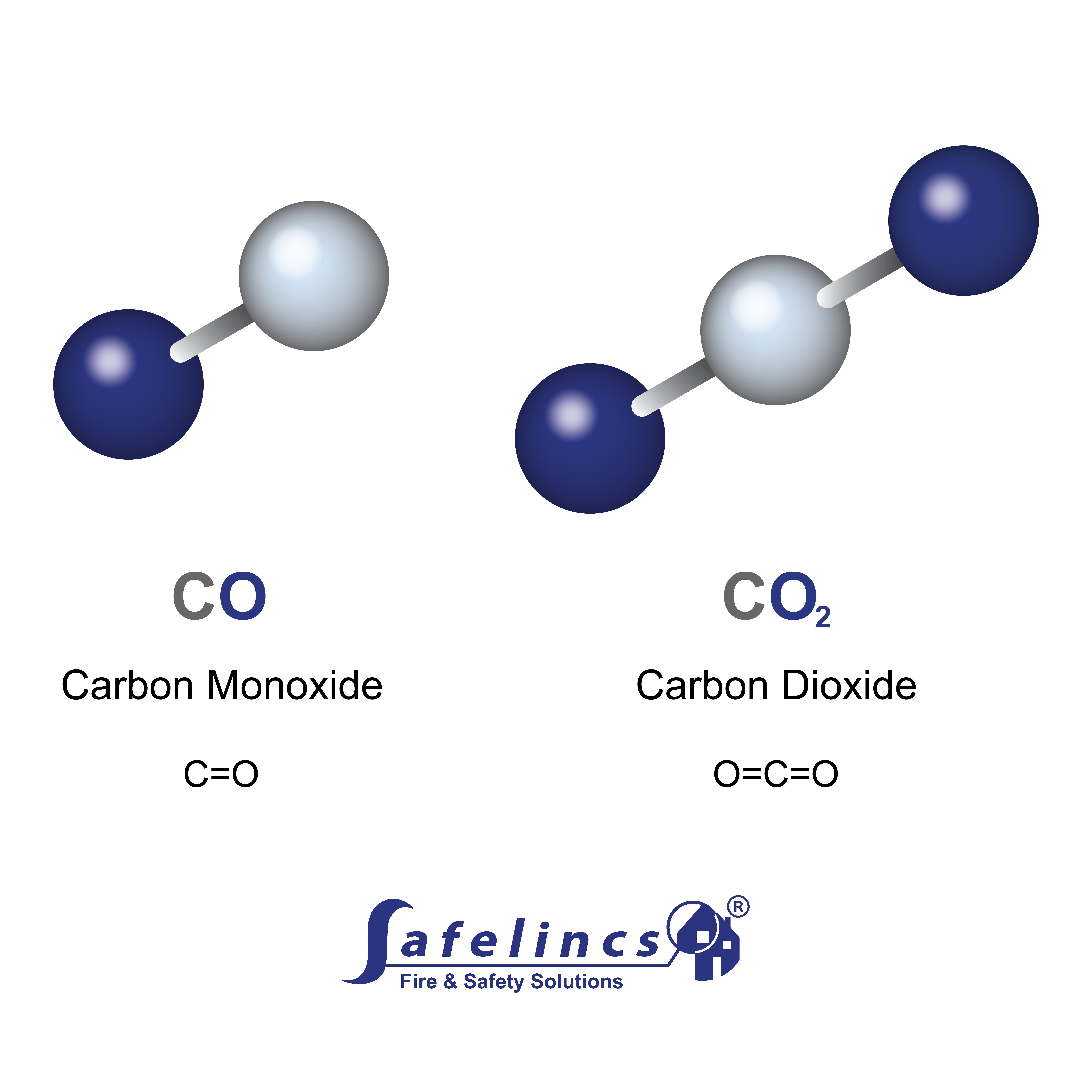Thursday 2nd May 2024
What is the difference between CO and CO2?
CO (carbon monoxide) and CO2 (carbon dioxide) are both colourless, odourless gasses. However, they are chemically different: CO is one oxygen atom bound to one carbon atom, while CO2 is two oxygen atoms bound to one carbon atom.
CO2 is a product of many natural processes in the human body, and is safe at normal levels. Due to the similarity in their chemical structure, however, CO is a dangerous gas, toxic even at low levels.

What is CO?
Carbon Monoxide is released during ‘incomplete combustion’. This usually happens when a fuel, such as coal, wood, or oil, is burned without enough oxygen present. This deadly gas is dangerous even at very low levels. Because its molecules are very similar in structure to CO2, they bind to red blood cells in the body and become ‘stuck’. As a result, the amount of oxygen that can be transported to the body’s essential organs is reduced. This lack of oxygen can cause fatigue, breathlessness, headaches, and eventually death.
Levels as low as 50ppm (parts per million) will cause harm, particularly with prolonged exposure, while 700ppm can quickly be fatal.
Any level of CO therefore warrants concern, which can only be detected with a working carbon monoxide detector.
What is CO2?
Carbon Dioxide is released by many natural chemical processes, including combustion, respiration, and decomposition. CO2 is used to give fizzy drinks their bubbles, and as a medium in some fire extinguishers. It’s also present in the air we breathe, where it safe at normal levels (under 800ppm). However, at extreme levels, CO2 can cause asphyxiation by reducing the level of oxygen available.

CO2 and indoor air quality
Although carbon dioxide is naturally present in the air, high levels can have negative effects on human health. Poor ventilation in an enclosed environment can lead to raised CO2 levels. This often leads to headaches, fatigue, and poor concentration. Safe indoor levels are below 800ppm; in classrooms, offices, and other public venues, levels can easily reach over 1000ppm.
You can improve indoor air quality by opening windows to improve ventilation, installing air purifiers, and reducing damp / humidity with dehumidifiers. Measuring CO2 levels with an indoor air quality monitor is the best way to track this, and know when improvements need to be made.
Detecting CO vs CO2
Carbon monoxide detectors should be installed to detect the presence of CO. Without this, it is impossible to detect the presence of this deadly gas, which is dangerous even at low levels. A CO alarm with a digital display allows users to monitor levels which are too low to trigger the alarm, encouraging them to improve ventilation.
Carbon Dioxide detectors have traditionally been used in commercial premises like breweries or laboratories, where fatal levels of CO2 might be released by chemical reactions. While CO2 poisoning is unlikely to happen in a home environment, however, new technology has made these detectors more affordable and accessible. CO2 monitors are now recommended in schools, offices, and even homes to track and improve indoor air quality.
For information about detecting gas leaks, visit our blog.
CO vs CO2: both are colourless, odourless gasses, which pose different health risks. The only way to stay safe from these gasses is to make sure you have the appropriate detector fitted. For additional support in selecting the best detector for your needs, contact our friendly customer support team on 0800 612 6537.


